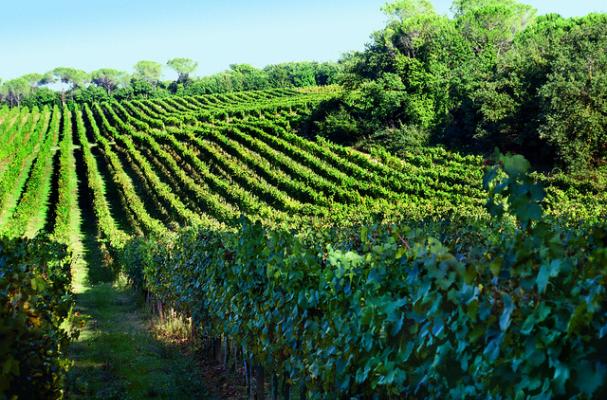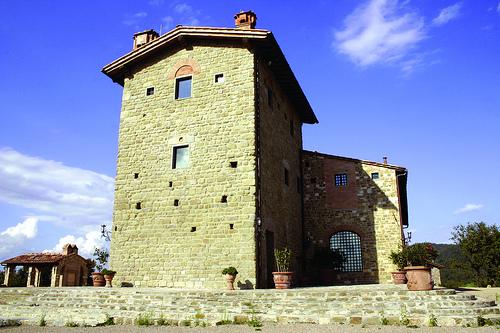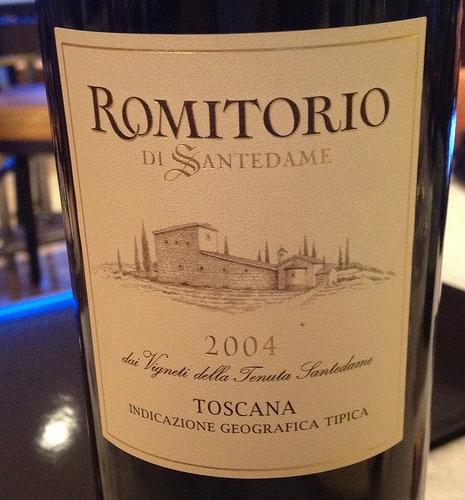
Chianti is an Italian wine with a long and storied history and while there are simple versions perfect for carryout pizza, there are also examples worthy of aging for years in the wine cellar. I had the chance to sit down with Daniel Burgio, National Sales Director from noted Chianti producer Ruffino, for some wine tasting and conversation. We talked about the history of Chianti and Ruffino's place in it, as well as promoting the diversity of the region.
Though I may be dating myself, my first experience with Chianti was an empty, straw-wrapped bottle with a candle in it that added what I thought of as a modicum of atmosphere to my college dorm room. I actually didn't know why Chianti came in such a package (called a fiasco) but, as Daniel explained, in the era before snug and safe cardboard cases, the wine had to be transported in wooden boxes over rough roads, and the straw was there to protect the bottles from shattering.
My history lesson continued as Daniel talked about a couple wines in front of me, the Riserva Ducale and the Riserva Ducale Oro, which have been produced since 1927 and 1947, respectively. The story behind the name "Riserva Ducale" comes from a discerning Duke who would stop by Ruffino, taste through the barrels, and have stamped on the best ones, "Riserva Ducale." (Making him possibly the first wine critic ever.)

More serious than your pizza-loving Chantis, Daniel described the Riserva Ducale as a traditional, acidity-driven wine with flavors of violets and sour cherries that would be perfect for classic tomato-based pasta dishes. The Oro, a more modern-styled wine with darker, black fruit notes was made for grilled meats.
So how do you tell a weekday Chianti from a more serious, age-worthy example? Daniel stresses the importance of educating people to the three types of Chanti: Chianti, Chianti Classico, and Chianti Classico Reserva. You'll see this on the front label: Chianti designating the everyday wines of the region, Chianti Classico as a step up in location and produced with more stringent requirements, and Chianti Classico Riserva denoting a showcase of the best work in the vineyard and winery.
The discussion got really interesting when I brought up the topic of "Super Tuscans." These are wines that became famous for use of non-traditional grapes like Cabernet and Merlot. I was surprised to learn from Daniel that Cabernet has been in and around Tuscany since the 1900s. As Daniel explained, "It's a great location to grow any grape in the world." Though he's a traditionalist at heart: "[Super Tuscans] are all about power and grip; to me, that isn't Tuscany." We both have in common a penchant for wines with elegance and finesse.
 This traditionalist bent, however, does not exclude an appreciation of the experimental spirit. Daniel opened one of the most unique wines I have ever tasted from Tuscany, the Romitorio di Santedame. A blend of 60% Colorino and 40% Merlot, it comes from vineyards boasting the highest elevation in the Chianti Classico region. An earthy wine with plenty of bite, it would be fantastic with a grilled steak smothered in mushrooms. Or combine your weeknight dinner with your wine from the cellar, and enjoy it with a sausage and mushroom pizza. Because sometimes a good pizza is reason enough to pull a fine bottle from the cellar.
This traditionalist bent, however, does not exclude an appreciation of the experimental spirit. Daniel opened one of the most unique wines I have ever tasted from Tuscany, the Romitorio di Santedame. A blend of 60% Colorino and 40% Merlot, it comes from vineyards boasting the highest elevation in the Chianti Classico region. An earthy wine with plenty of bite, it would be fantastic with a grilled steak smothered in mushrooms. Or combine your weeknight dinner with your wine from the cellar, and enjoy it with a sausage and mushroom pizza. Because sometimes a good pizza is reason enough to pull a fine bottle from the cellar.
Image Sources:










